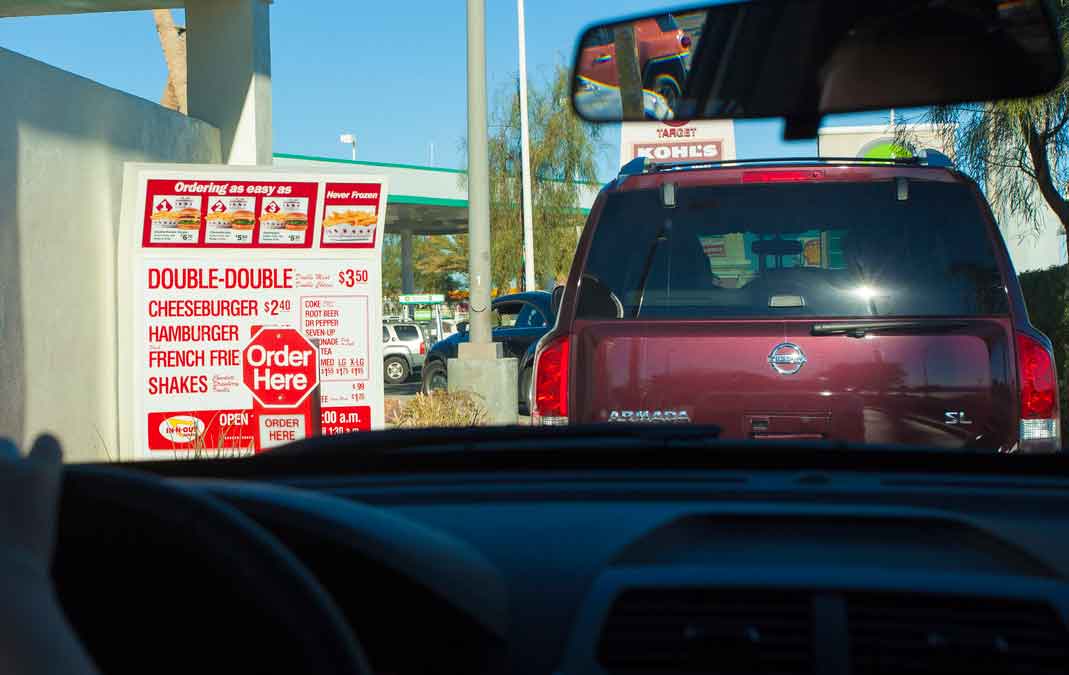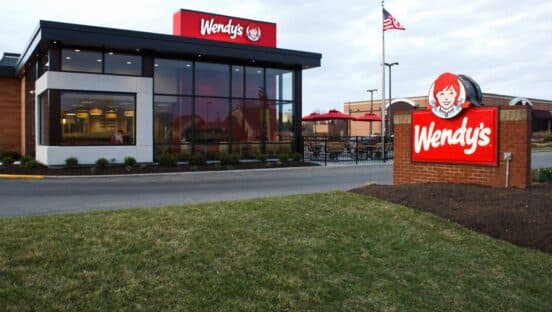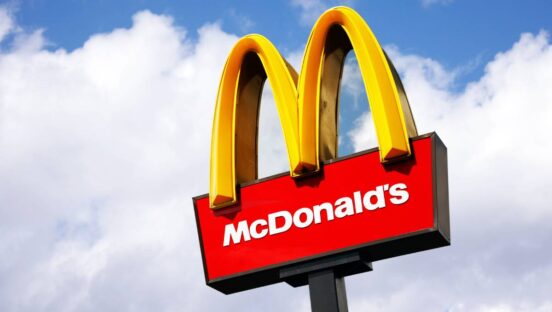[float_image image=”https://www.qsrmagazine.com/wp-content/uploads/2018/09/dt-links.gif” width=”30″ link=”https://www.qsrmagazine.com/drive-thru/2018-drive-thru-study” caption=”” alt=”” align=”right” /]
It seems that all anyone in the restaurant industry can talk about these days is off-premises dining. From mobile-powered delivery to kiosk-driven takeout and all of the other increasingly accessible food occasions outside the four walls, off-premises is revolutionizing how guests interact with food businesses—and how those businesses design their customer experiences.
But off-premises is old hat for quick serves. After all, it’s technically been a key strategy for the industry for generations in the form of the drive thru. Most major quick serves report about 70 percent of their sales going out the drive-thru window, and that expertise gives them a leg up when it comes to staffing, packaging, expediency, and all of the other systems necessary for running a robust off-premises dining program.
Which isn’t to say they should turn their attention away from drive thru. The outdoor lane is just as important today to quick-service business as ever before—if not even more so. And as business grows, pressures on drive-thru performance, particularly accuracy and speed of service—two of the most critical drive-thru metrics—have gotten more intense.
“Over the last five years, everybody has seen, as traffic has increased in the drive thru, times have slowed down,” says Mike Grams, chief operating officer at Taco Bell. “Items per [transaction] has gone up almost a half item at Taco Bell in the last couple years, which is a great thing, but it also means something else has to be produced with every order.”
Average speed-of-service times—the time between the customer placing his or her order and then receiving it—have largely slowed across the board among the major players. This year’s brands clocked in at an average of 234 seconds, compared with about 225 seconds last year. Back in 2003, the year Wendy’s scored an all-time Drive-Thru Study best of 116 seconds, the national average was about 190 seconds.
Operators are managing this uptick in business the best they can; order accuracy has improved over time, and this year’s 89.7 percent measurement is just a hair above last year’s 89.4 percent. All say that their No. 1 task in the drive thru is ensuring top-notch accuracy, customer experience, and, to the best of their abilities, speed of service. And the tools they have on hand to do so continue to evolve and improve with new technological advancements. Tablets have allowed for efficient line-busting; wireless communications systems have made back-and-forth with the customer more effortless; and LED menuboards have given guests clearer ideas of what they might want to order.
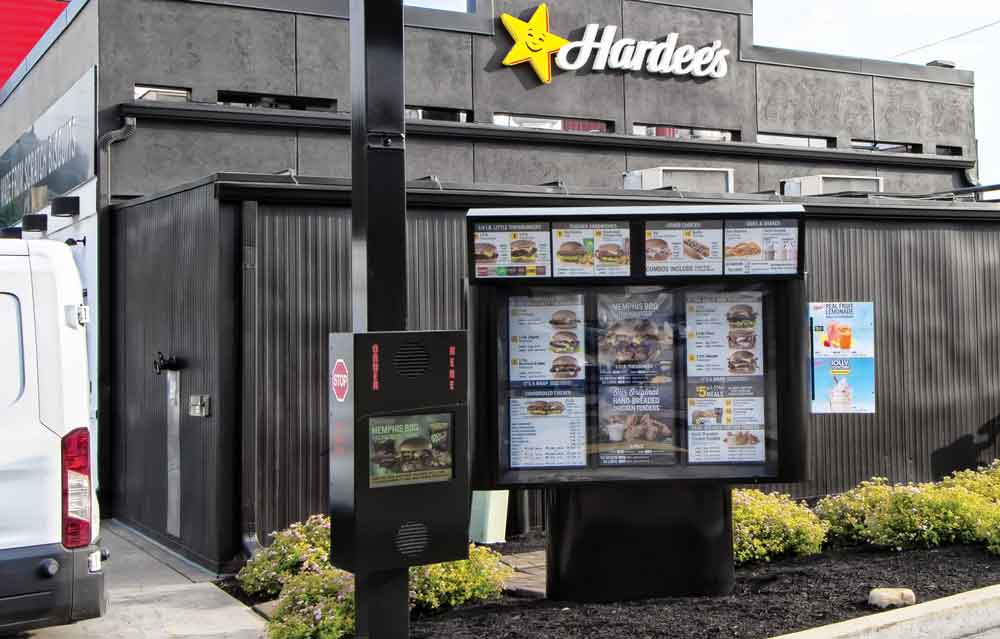
The question on many operators’ minds for the last half-decade or so is: Could mobile ordering become the next great game-changer for the drive-thru business?
The industry started to get a clearer answer to that question this year; limited-service brands are finally starting to incorporate the technology into their drive thrus. Dunkin’ Donuts made a splash earlier this year when it announced that its new NextGen prototype would include a mobile-order-only lane in the drive thru. And Chipotle is opening a drive-thru unit in Ohio—its first ever—that is exclusively for mobile order pick-ups.
Deepak Ajmani, vice president of restaurant services for Wendy’s, says the company continues to work on its ordering app as a seamless brand experience, and the possibilities of that syncing up with the drive thru are tantalizing.
“If you think about mobile devices as a handheld kiosk, there’s a lot of opportunity for growth there,” Ajmani says. “Imagine a fast-food world where you place your order on your phone, drive up to the pick-up window, and there it is. Made fresh, just as you ordered.”
But, he adds, “it’s proven to be tricky to navigate operationally.”
Indeed, others in the industry aren’t sure mobile is going to revolutionize the drive thru as it has delivery, takeout, and catering. The primary issue is that the easiest iteration includes a model like Dunkin’s, in which a dedicated lane is necessary to fulfill mobile orders. And operators just don’t have the luxury with real estate today to incorporate two separate lanes.
[float_image image=”https://www.qsrmagazine.com/wp-content/uploads/2018/10/taco-bell.jpg” width=”40″ link=”” caption=”COO Mike Grams says Taco Bell’s items per drive-thru transaction have climbed by a half item in the last few years, indicating a growing drive-thru popularity.” alt=”” align=”left” /]
John Kelly, chief operating officer at Arby’s, points to other challenges with mobile ordering: For example, when should the restaurant prepare the order? How do you time an order to be ready right when the customer rolls up—not so early that the order gets cold, or so late that it backs up the rest of the lane?
“One of the mistakes you could make is moving into some of the trends around some of the technology and some of the things that are cool and fresh and really seem cutting edge,” Kelly says. “If the guest doesn’t want to experience it that way, I don’t know if it’s going to be good for the business, and certainly not for the guest.”
It’s not clear yet if customers would whole-heartedly embrace an experience in which they can pick up a mobile order through the drive thru. Taco Bell’s Grams says the restaurants he knows that have mobile-order drive-thru lanes are typically empty. “I’m not sure that’s 100 percent the way to go,” he says. “If I get enough volume to have another lane, great, but I think there’s still so much room for us to grow in the space today.”
So no, perhaps mobile ordering isn’t the game-changer so much of the industry once expected it to be. But that doesn’t mean quick-serve brands should abandon their research into that and other innovative approaches to the outdoor lane, and off-premises dining in general. Gary Stibel, CEO of the New England Consulting Group, says brands need to stop “chasing the puck” when it comes to innovation. According to that metaphor made famous by hockey legend Wayne Gretzky, the best performers are not those who chase the puck, but rather those who anticipate where the puck is going and head there instead.
What might that look like for drive thru? Stibel suggests robots and artificial intelligence as being two possible tools important for the future drive-thru operation. For example, perhaps a restaurant employs car-scanning technology that recognizes the vehicle and proposes to the driver the same order that he or she picked up during their last visit.
Arby’s Kelly concedes that something like artificial intelligence could become an important tool in the drive-thru toolbox down the road. New technologies adapted to the existing drive-thru footprint, he says, will for now be prioritized over anything that might affect the drive-thru layout. “Cars are always going to be 7 feet wide and 15 feet long, and they’re going to have to fit on a parking lot,” Kelly says. “I think we’re always going to be constrained there for mobile lanes, double lanes, those types of things. I think it’s really more the digital facing and technology that will be most advancing.”
And not all of that has to be as flashy as mobile ordering or AI systems. In drive thru, it’s key to remove any impediment to speed, accuracy, and the customer experience, and operators are doing that with clear speakers, clean and organized menus, and back-of-house tools that allow the crew to do their jobs unencumbered.
Grams says Taco Bell is looking closely at digital menuboards, particularly those that integrate an order-confirmation board. The boards will allow Taco Bell to change the menu based on daypart, something that Grams says can accommodate “more time-sensitive” meal occasions throughout the day.
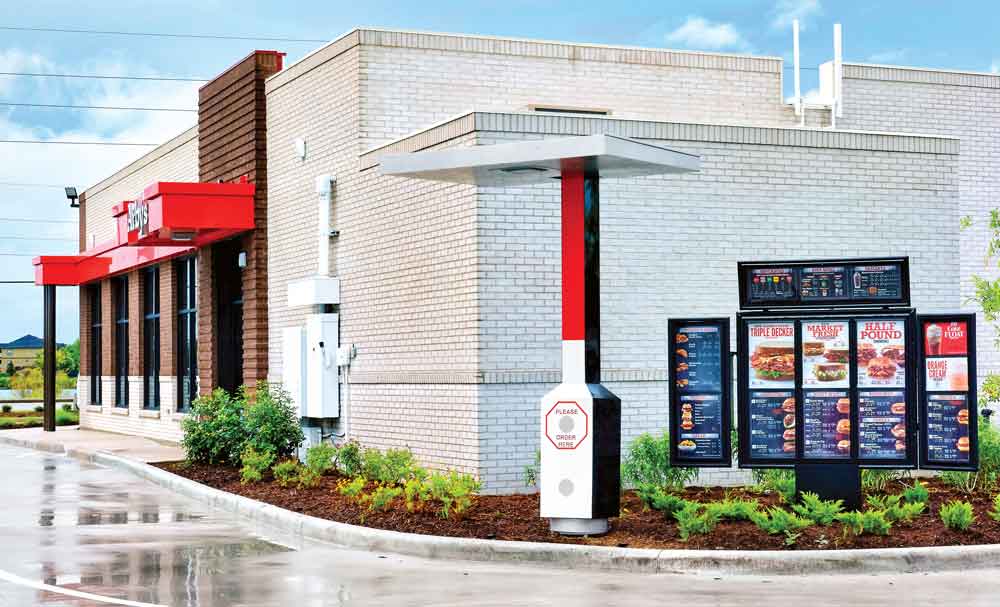
“We know the No. 1 pain point for the drive-thru experience today is actually at the order point, and that hasn’t changed in the 15 years that I’ve worked in drive thrus,” Grams says. “How do you make that faster? How do you make it easier? How do you make it more readable and more enjoyable? Where you see us experiment and prototype and try different things will be around that area.”
The devil is in the details for most leaders in charge of designing a better drive-thru experience. Everything from kitchen layout to menu positioning can have an impact on drive-thru performance, meaning brands are frequently testing upgrades and monitoring individual units to learn how they might create a better experience both for the customer and the employees.
Ajmani says Wendy’s tests its drive-thru innovations in its Wendy’s 90° Labs facility in Columbus, Ohio. He describes it as a “collaborative space” where the company researches the effect that new technologies like mobile and kiosks might have on the Wendy’s customer experience.
“Last year, we tested consumer ordering behavior and explored different stress levels by placing kiosks in various positions around the restaurant, and even hosted mock drive-thru orders using a golf cart to pull through a simulated restaurant setup,” he says.
CKE Restaurants, parent of Hardee’s and Carl’s Jr., is constantly reviewing its drive thrus—especially during the lunch daypart, when speed of service is most important—to ensure proper execution. Tom Brennan, CKE’s COO, says the company this year introduced a restaurant excellence team made up of experts and engineers that is “keenly focused on understanding the operational impact” of everything it does in the restaurants. In addition, he says, CKE does a deep dive into its drive thru every quarter, experiencing it as if through the eyes of the customer so that it can improve upon any hold-ups.
“By continuously working to simplify the operation, we lay the foundation for consistent execution,” Brennan says.
Consistency is something Stibel points to as being the industry’s biggest drive-thru problem. “You can do a drive thru at any one of the [quick serves], and at different times of day, you can get great service from a crew and terrible service from a crew,” he says. “The industry has come a long way, but has even further to go.”
Even though technology may help make drive thrus much faster and more accurate, customer service can still make or break the overall experience, which means people—that’s right, low-technology people—are critical to modernizing the outdoor lane.
Howland Blackiston, principal with consultancy King-Casey, says that while drive thrus have been fairly cut-and-dried in the past, the future will require a more varied approach. Many, he says, will home in on customer service. Starbucks is already highlighting that aspect of the operation in its drive thru. The coffee behemoth rolled out an upgraded drive-thru experience a few years ago that it developed with King-Casey, one in which menuboards feature video of the barista taking the customer’s order to enhance the personal nature of the conversation.
“We see more thoughtfully and attractively designed drive thrus, and new ways to ensure customers experience enjoyable personalized service and welcoming live interaction with staff,” Blackiston says. “Chick-fil-A and In-N-Out Burger are sending staff to the drive thru for the personal touch. Tomorrow’s best-practice drive thrus will find new ways to dazzle customers and differentiate the brand.”
Some of that personal interaction, though, can drag down the speed of service. At Arby’s, Kelly says the company has removed much of the suggestive selling and instead allowed the guests to have more control over the drive-thru experience.
“We really said, this is their time, so instead of all that, we say, ‘Welcome to Arby’s; order when ready,’” he says.

